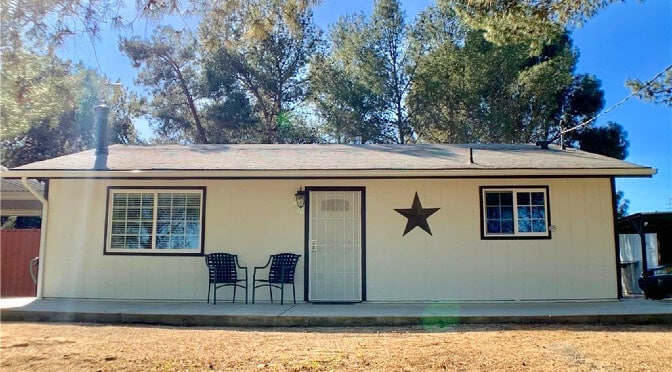
Bridge Loans – The Complete Guide
The term bridge loan is commonly used to describe any short-term lending option. This article will focus specifically on bridge loans for the purpose borrowing against or purchasing a personal residence. These bridge loans are used to “bridge” the gap between the purchase of a new property and the sale of an existing property.
Key Takeaways
- Bridge loans are short-term financing options that can be used to purchase a new property before the sale of an existing property.
- They are commonly secured by the existing property and the borrower is required to make monthly payments until the existing property is sold.
- Bridge loans can provide quick access to funding but they typically come with higher interest rates and fees than traditional mortgages.
- To qualify for a bridge loan the borrower needs to have a property to use as collateral, decent credit scores and proof of income to make monthly payments.
- It’s important to have a clear exit strategy in place such as the sale of an existing property or refinancing to ensure that the bridge loan can be repaid in a timely manner.
- Bridge loans are typically offered by specialty lenders such as hard money lenders and private money lenders.
What is a Bridge Loan?
A bridge loan is a short-term financing tool used to finance the purchase of a new property before an existing property is sold. The bridge loan is secured by the existing real estate and used to bridge the gap between the purchase of the new property and the sale of the existing property.
In some situations, the bridge loan is secured against the new property being purchased. This would require the borrower to have a significant down payment for the purchase of at least 25%.
How does a Bridge Loan Work?
A bridge loan works by providing the borrower with a short-term loan which is then used to purchase a new property. The loan is secured by the existing property, and the borrower is required to make monthly payments until the existing property is sold. The sale of the existing property automatically pays off the bridge loan.
When to Use a Bridge Loan?
Bridge loans are typically used when a property owner has significant equity in their existing property and want to purchase a new property. They wish to secure the new property first but they aren’t able to qualify for carrying two loans simultaneously due to the high projected debt to income ratio. Bridge loans are a special exception which allow the borrower to exceed the normal debt to income ratio and still qualify for the new loan.
Retirees who don’t currently have sufficient income to qualify for a traditional loan will commonly use a bridge loan to access the equity in their home and purchase a new home.
Bridge loans are useful in situations where the sale of an existing property is expected to happen in the near future but the funds are needed now.
What is an Example of a Bridge Loan?
An example of a bridge loan would be a homeowner who wants to purchase a new home before selling their existing home. The home is worth $800,000 and has no existing loans against the property. The homeowner takes out a bridge loan for $400,000 using their existing home as collateral and uses the funds to purchase the new home. Once the existing home is sold, the sales proceeds pay off the bridge loan.
How to get a Bridge Loan to Purchase a House – How do I Qualify for a Bridge Loan?
To get a bridge loan to purchase a house, the borrower would need to have an existing property with enough equity to use as collateral, a sufficient credit score and proof of income or sufficient cash reserves. The bridge loan lender will also want to know the borrower’s exit strategy for how the bridge loan will be repaid.
Bridge loans are a special exception that do not require formal income verification in order to meet a specific debt to income ratio for qualification.
What are the Pros of Bridge Loans?
- -Bridge loans provide quick and flexible funding for property purchases.
- -They are a useful option for property owners who need to bridge the gap between the sale of an existing property and the purchase of a new one.
- -Bridge loans allow a borrower to secure a new property prior to selling an existing property. This prevents the need to move twice or get a new property under contract with the contingency of selling the existing property.
What are the Cons of Bridge Loans?
- -Bridge loans often have higher interest rates and fees than traditional mortgages.
- -Borrowers are required to make monthly payments until the existing property is sold.
- -There is the risk that the existing property doesn’t sell as quickly as anticipated, leaving the borrower with a higher debt load for a longer period of time.
How long does it take to get a Bridge Loan?
The time it takes to get a bridge loan from a private bridge loan lender is as fast as 2-2.5 weeks. This is the minimum time required for this type of loan on a personal residence due to the current federal regulations. Bridge loan approvals can be provided the same day the application form is received.
Who offers Bridge Loans?
Bridge loans are offered by specialized lenders such as hard money lenders or private money lenders. These lenders provide more flexibility than traditional banks and are able to offer short-term lending options. Banks, credit unions and other traditional lenders typically do not offer bridge loans as they aren’t willing to provide short-term loans that may only be active for a couple months.
What are the Costs for Bridge Loans?
The costs associated with bridge loans can vary depending on the lender and the specific loan terms. Bridge loans have higher interest rates and fees than most traditional mortgages. Bridge loan interest rates can be in the range of 9-10%. Borrowers are also be required to pay closing costs such as escrow, title insurance, notary fees and recording fees.
Conclusion
Overall, bridge loans can be a useful option for home owners who need quick access to equity in their existing home. However, it’s important to understand the terms and conditions of the bridge loan, as well as the potential risks, prior to obtaining a bridge loan.
It’s also important to have a clear exit strategy in place, such as the sale of an existing property, to ensure that the loan can be repaid in a timely manner.
Recent Bridge Loans Funded by North Coast Financial
Bridge Loans Resource Guide
California Bridge Loan Request
We will contact you to review the loan scenario and provide a quote.




